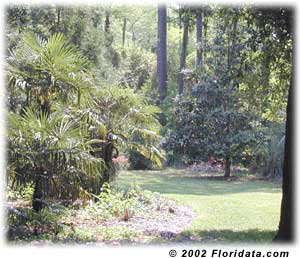
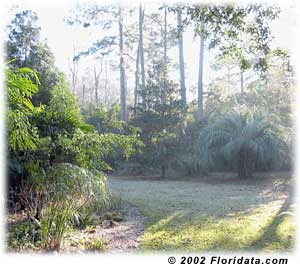
I began this Journal entry in April and then ignored it for 9 months. I finally finished it early January 2003. It was a rough year for me - my day job was demanding and bizarre and there just wasn't the time to garden, do the weekly Floridata updates and my Gardener's Journal column. Something had to go so in order to maintain my sanity and health, I opted to blow off writing the Journal. Although these things are fun to write and produce, it is nonetheless a painful and time consuming process that just doesn't seem to get any easier. So I cheated and combined the last nine months of the year into a single entry so this Journal page will be even more long-winded and rambling than usual but you should read it anyway because there's lots of pretty plant pictures and I even took the time to correct most of the spelling and grammar errors!

April Projects
Keeping everything properly watered was (is) an ongoing effort around here. With the whole hot summer looming ahead, I decided my main project for April would be to mulch. All of the beds were to get a nice thick layer of hay, a material that decays quickly and that would help improve improve the light sandy soil we have here. I borrowed a friend's truck, bought a 500 lb (227 kg) round of hay and hauled it home only to discover that it had settled and jammed the latch on the tailgate. I spent the next three hours busting the bale apart so it could be unloaded and the truck returned. It was then I discovered that messing with hay in 90 heat and humidity is dirty and dusty a good way to get an asthma attack. For the next three evenings I wheezed about the yard and succeeded in mulching about 1/3 of my beds. The remaining beds mostly did without but because we had decent rains this year they held their own and except for some weediness are health and happy. When I win the lottery I plan to buy baled pine straw instead which costs more but lasts longer. It is also prettier, is less dusty and more pleasant to handle and besides, nobody will lend me their truck for hay rounds anymore.
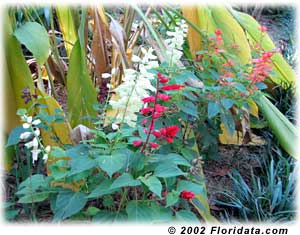
There's an area near the dog runs that I've been adding plants to over the past ten years with the intent of eventually turning it into a shade garden. I planted a trio of blue China fir (Cunninghamia lanceolata) a decade ago and they are now range in height from 15 - 25 ft (4.6 - 7.6 m) tall. Beneath them are French and oakleaf hydrangeas (Hydrangea macrophylla and H. quercifolia) which have also grown to good size. I removed the last brambles and weeds from the area and trimmed up a very attractive native red bay (Persea borbonia) that was already growing there. Beside it I planted a white 'Henryi' clematis (Clematis X jackmanii) to see if it would climb it. At the far end of the bed there's a small patch of yaupon hollies (Ilex vomitoria) that I'm hacking into weird shapes - like cones and cubes atop long spindly stems. In the sunnier portion of the bed I stuck in several kinds of gingers, 'Black Jet' elephant ear (Colocasia esculenta), umbrella plant (Cyperus alternifolius), river oats (Chasmanthium latifolium) and variegated Confederate jasmine (Trachelospermum jasminoides). All these serve as backdrop to the garlic chives (Allium tuberosum), purple queen (Tradescantia pallida) and a couple dozen Salvia elegans 'Sparkler' Series which has the prettiest palette of purple, cream and pinkish-salmon flowers. For the finishing touch, I completed a monkey grass (Liriope muscari) border around and declared this area "done" except for enjoying watching it grow more beautiful each year. (OK, the truth be told, I'll probably move some of the gingers and hydrangeas around but it's mostly done, except for maybe a new Mexican fan palm (Washingtonia robusta) and ...)

May Projects
Bright, balmy and breezy, May was beautiful! I was working a lot of day job overtime and didn't get to spend near as much time in the yard as I'd have liked. I managed to put in a few new perennials like a bunch of purple and orange coneflowers (Echinacea purpurea and Rudbeckia fulgida var. sullivantii ) but, despite April's mulch madness, most of my time was spent trying to keep everything watered.
During May I got around to potting up dozens of palm seedlings that had germinated in the past several months. I was ten for ten on the seeds of Wallichia densiflora, a palm that looks like a dwarf version of the fishtail palm (Caryota mitis) but is supposedly more resistant to cold (looks promising so far...) If all goes well I'll have a nice little grove of these charming little multi-stemmed charmers in a couple of years! I didn't have as good luck with the Trachycarpus wagnerianus which closely resembles the Chinese fan palm (T. fortunei). Only 3 out of 18 seeds germinated which was a bummer. Nearly as big a disappointment was having not a single Butia paraguayensis come up out of 10 seeds planted - maybe it was old seed or possibly I don't know what I'm doing... So other than that and working too much, I mostly spent leisurely May moments playing with the puppies and fighting off a bad case of spring fever.
June Projects
June was a "crunch month" for my consulting job. I spent the month writing technical specifications containing tons of words, graphs and diagrams for management to ignore when making uninformed decisions. When I did make it into to the garden in June it was to relax and enjoy and to discharge burnout. June was a month for me to enjoy, instead of work in, the garden which helps me maintain my charming demeanor and even temperament.

July Projects
As July begin I was totally burned out from the day job so I drove up to Kentucky to see the family. There we had pool parties and barbecues and I got to watch lots of fireworks. I also had the opportunity to visit Spring Grove Cemetery and Arboretum which is one of my favorite places in near by Cincinnati. There I got to take a bunch of great tree pictures. Especially nice was visiting the area where veterans are buried. A tiny American flag was placed upon each soldiers' grave which created a memorable sight and gave me a chance to give them a silent thanks for their sacrifices.
It was a very hot day and I was running all over the place in a foto frenzy snapping tree pictures when I had a monster asthma attack. Luckily I had an inhaler with me but I must have gotten pretty goofy. I mixed up the labels on some of the pictures so when we introduced the the new profile for the American beech (Fagus grandifolia) it had a photo of the wrong tree (D'OH!). Thanks to Will at Duke University for pointing out the error. It's correct now, so check it out to see what this tree really looks like!
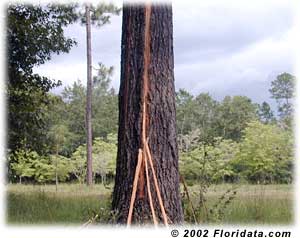
I returned home to Tallahassee in mid-July to heat and rain. A couple of hurricanes brushed our area dumping a lot of much needed rain as it passed. Unfortunately the long awaited moisture triggered a population explosion of mosquitoes. Skeeters of every species and persuasion and make and model attacked in swarms. Mosquito repellent was mandatory when venturing outdoors. Unfortunately the "good" (effective) stuff called DEET makes me feel sick (this stuff can't be safe, think twice before putting this junk on young kids) so I spent way less time in the yard than normal. West Nile virus is lurking about and it just isn't worth taking the risk. Also other insects plagued me as well, the worst were tiny "seed ticks" that had a habit of attaching to the most unpleasant places on the human body and chiggers (a.k.a. jiggers, redbug) which are tiny demons that embed themselves under the skin where they start bonfires and party for weeks much to my raging discomfort.

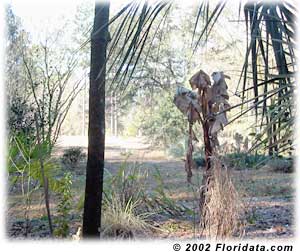
August Projects
Our area has had below normal annual rainfalls for the past several years. Happily August continued the pattern of afternoon thunderstorms that began in late July. The ample moisture caused local vegetation rejoice and grow crazy. It was amazing and satisfying to see everything so lush and green after all those brown years. Unfortunately, up on The Hill a rogue patch of blackberry brambles responded to the abundance by growing crazy and since I hadn't properly mulched the area earlier in the year I had a big bad briar patch to contend with. I paid for my neglect as the monster sticker vines began choking out nearby palms, shrubs and even cactus! The damn thing upset so me so much that I was out there for several hot and muggy weekends ripping the monstrous growth out handful by handful. My forearms were set aflame with a crosshatch of angry scarlet gashes whose fire could only be quenched with great globs of anesthetic antibiotic ointment. I have sworn a solemn oath to myself never to let blackberry brambles take over again (and to at least wear gloves when I pull them out if they do come back!) Since then, I patrol the area every month removing any young sprouts that appear. When the weather warms up I plan to spot spray with herbicide and hopefully that will kill off my briar patch for good!
Despite the heat, bugs and briars, August was a decent month. For years I have struggled to simply keep alive my tiny, tender treasures during shriveling summers. The month's ample rains now have most things absolutely thriving! After all these years, my place is finally beginning to resemble the garden visions in my head!
September Projects
Come September the temperatures cooled a bit but I was stuck working lots of overtime for my consulting job. Sixty plus hour weeks didn't leave much time for yard work. If I did get outside it was usually just to sit on a lawn chair and stare into space.
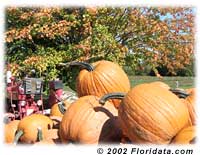
October Projects
Burned out from the ridiculous work load in September, I treated myself to another road trip up to Kentucky to relax and see my Mom. We got to go pick apples and pumpkins down by the Ohio River and I made my usual visit to Spring Grove Cemetery and Arboretum to take more tree pictures. When I returned home I was eager to get back in the garden after all those weeks working overtime. I had a dozen Sabal bermudana seedlings up on The Hill and transplanted three Chinese fan palms (Trachycarpus fortunei) to that area as well. October was really humid and buggy so I spent the remainder of the month indoors working on Floridata and otherwise not having a life.
November Projects
Early in the month I had the pleasure of visiting Miami for the Fairchild Tropical Garden's annual palm sale. As usual it was a real treat to be able to see and purchase such a wide selection palms at such great prices. If you're a palm lover you owe it to yourself to attend next year! When I returned home to Tallahassee I decided not to plant my new palms until this coming spring as freezes, fungus and hungry deer are likely to assault them until then ( I have them all huddled around me in my office at the moment as a hard freeze is predicted for tonight - brrrr)
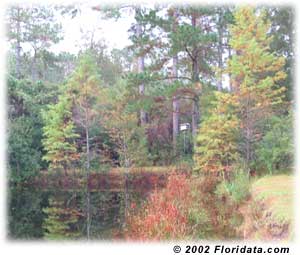
Mid-November found me clearing brush from an area up on the hill that I've been developing over the past few years. When "all danger of frost is past" (about March 16 for where I live) I'm going to plant a low maintenance wildflower garden up among some of my palms and yuccas. I expect it to be grand!
As the temperature and mosquito population declined, my energy and interest levels went up and I resolved to complete the monkey grass (Liriope muscari) borders for a couple of my camellia and Japanese magnolia beds around the dog runs. Since I've been obsessively outlining my plantings with thousands of feet of border for the past 13 years I have a ready source of raw materials. Every few years the borders require trimming and reshaping as they grow out of bounds. They get out of shape and sometimes tangle with neighbors like turf grass and ivy. As I can't bear to throw away/burn the border grass trimmings I feel compelled to use them for new borders. This might border on obsession but it appeals to the neat freak in me to have nice defined edges around everything besides the stuff is so easy to transplant, grows fast, and is drought tolerant it seems a shame to waste!

December Projects
After installing 200 ft (61 m) of border grass in the Dog Garden last month, my enthusiasm and obsessiveness really kicked in and I resolved that this would be the year I finish off the front portion of the Floridune Canine Memorial Garden (Dog Cemetery). I live with a bunch of dogs, mostly Great Danes, and am very attached to them. When a dog dies I put them with the rest of the gang in the Dog Cemetery and plant a tree upon the grave in memory. Over the years this area has became a pretty grove of mostly hollies, loquat, camellias and Japanese magnolias. Early in the month I began drawing the final shapes the beds and installed another 350 ft (170 m) of border. It looked so nice I transplanted some (rather large) shrubs and trees into the area. The prettiest was a 6 ft (1.8 m) Camellia sasanqua 'Yuletide' that I moved to the front of the Dog Cemetery where it will get more sun. It only produces a few blossoms a year - I suspect because it was growing in the rather deep shade beneath a live oak. With luck it will be covered with hundreds of pretty red and gold flowers next year in its new, sunnier home just in time for Christmas next year.
I had some big gardening plans for the holidays but I kept getting sick and then I'd start to get better and then I'd go work out in the rain and cold and then I'd get sick again until I got really sick and had to go to the doctor. As a result there's still a needle palm (Rhapidophyllum hystrix) and two huge pampas grass (Cortaderia selloana) clumps to transplant (not looking forward to that!) and about a dozen potted junipers (Juniperus virginiana) and wax myrtles (Myrica cerifera) to plant. If I'm not sick and/or lazy and unmotivated maybe I'll get to them in January.
In Bloom at Floridune
Since this is a mega-Journal entry covering 9 months I thought it'd be fun to review my flower favorites by season. The fact is that the deer and bunnies ate all of my cool weather bloomers before I could take pictures. That's pretty much ruined my December subjects so it looks like a review is what I'll do!

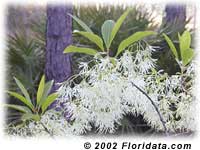
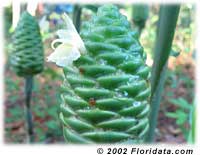

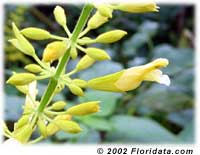
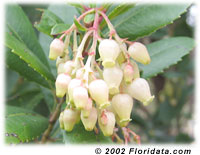
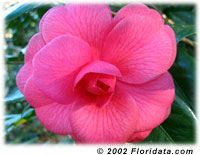
In Bloom: Spring
Flowering woody plants are the stars of the springtime show here at Floridune. Azaleas, dogwood, gardenia and cross vine are just some of the southern favorites that we enjoy here. As spring progresses to summer there's the native fringe tree and the spectacular southern magnolia and despite my efforts, probably a bit too much of the delightfully fragrant (but invasive here) Chinese wisteria.
Summer
By the first day of summer, the more temperate annuals and perennials begin to crap out. That's one reason that I like the salvias, many of these species can manage to look beautiful despite the heat and humidity. Scarlet sage (Salvia splendens), Texas sage (S. coccinea), mealycup sage (S. farinacea) and blue anise sage (S. guaranitica) are my some of my favs but take your pick, they're all good and hummingbirds love them too. For maximum color during the summer I count on tropical species like soap aloe (Aloe saponaria), jacobinia (Justicia spp.), allamanda (Mandevilla spp.), princess flower (Tibouchina urvilleana), butterfly ginger (Hedychium coronarium) and many others. Impatiens ( Impatiens wallerana) are mandatory for shady areas in summer and I confess to being not only a born again fan of blue ageratum (Ageratum houstonianum) but I'm even beginning to plant petunias (Petunia x hybrida) again (although I still hate the way they smell)!
Autumn
Our sizzling summer temperatures typically moderate in late September. At this time of year the summer annuals get a second wind and pull themselves back together again while the tropical perennials are looking better than ever. The most noticeable players in my garden this time of year are the huge, bright yellow forsythia sage and the brilliant red firespike both of which look absolutely psychedelic up against the royal purple of the princess flower shrub. Other shrubs joining the show this time of year are the Turk's cap hibiscus and golden showers (Senna pendula - caution, this one is an invasive pest in Central and South Florida where it's not frost-killed each year)
Winter
As I write this journal it is winter, a rather chilly winter that has given us several freezes since Thanksgiving which killed the tropical species back to the roots. We don't really have winter here in Florida's panhandle, it is more like an extended autumn that gradually morphs into spring starting in late January or early February. This means that we can usually grow cool weather flowers like pansies and snapdragons this time of year. I plant these winter annuals every year and every year the the local deer and rabbits nibble them, the moles push them out of the ground and the armadillos root them up! Every year I swear I'm not going to bother with them but invariably a wave of unrealistic optimism washes over me in October and I usually do some anyway. At the moment I have beds full of tiny green nubs that are the remains of what would be some very pretty flowers where they not also so tasty to various varmints. As it to make up for the difficulties in growing annuals, we are blessed here in North Florida to have a perfect climate for camellias - japonicas and sasanquas. By selecting a mixture of early and late blooming varieties of each species it is possible to enjoy these fabulous flowers from October through March - and I do!
There are a few plants here at Floridune that have NEVER bloomed and I'm getting more than a bit annoyed about it! There are 6 different red hot poker plants (Kniphofia spp.) out back that have been there for more than a decade and have yet to produce a single flower. Nearby is some Aaron's beard (Hypericum calycinum) that hasn't ever bloomed in six years. Maybe it's the location - these slackers will all be transplanted this spring. In addition I'll cut back Aaron's beard hard because it blooms on new growth and I hope this will inspire some flowers!. I'm also getting tired of waiting for my native wisteria (Wisteria frutescens) vine to bloom. It's been here years too so I'm moving it over to the Dog Garden where I'll pamper it until it blooms - maybe some of my famous dog poop compost will do the trick!
In the next couple of weeks the rest of our winter bloomers will begin to perform. The deciduous magnolias (Magnolia stellata and M. x soulangeana) are already covered with fat buds are just waiting for our cold snap to end. Shortly thereafter our native "first signs of spring", sunny yellow Carolina jessamine ( Gelsemium sempervirens ) and bright red swamp maple (Acer rubrum), will join the show. One of the prettiest winter scenes here in Florida's panhandle is to see these two spectacular early bloomers against a clear, brilliantly blue winter sky.
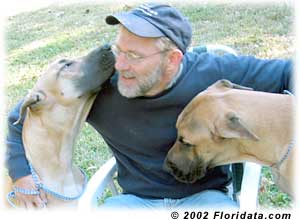
The Lawn Chair
Wow, this really was a long-winded entry! I can't believe how long it takes for me to write these things and then even longer if I want to correct most of the errors. Writing this stuff is like going to the gym - it's semi-painful and I'd really rather not do it but it feels good when it's done and it kept me indoors for a week so I could recuperate from my cold. I realize too, in reviewing the past year, that maybe 2002 wasn't as awful as it seemed. Floridata survived another year. My yard is beginning to look like a garden.
So unless I wander off into madness and despair, I'll be here in 2003 growing stuff and sharing what I learn with you. Please visit often and tell your friends about Floridata.
John S. "Jack" Scheper 12/31/02